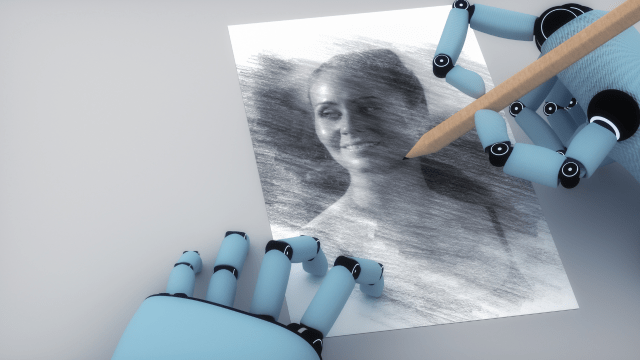Over the past week or so, an AI art program has been taking over Instagram and Twitter called Lensa.
From the outset, it promises some very heavy editing to the user, who only need to feed an image through to the program for it to generate highly edited and sophisticated art.
It’s a pretty cool idea. Using machine learning, the app is capable of generating some very impressive images that are reminiscent of the user’s face and features.
And this has been huge for the world of content creators and people on social media. Being able to quickly whip up an awesome-looking portrait of themself for their feed is pretty cool in its own way.
But it’s not perfect, nor is it the most ethical concept. Let’s dive into it.
What is the AI art thing?
Lensa is the AI art application that’s being widely used across social media at the moment. It sources images from the internet and collates them with your photos to create portraits that seem highly detailed or thematic, like sci-fi or fantasy images. It does this with a feature called ‘Magic Avatars’, which seem far more detailed than AI art we’ve covered before, such as DALL-E or MidJourney.
Tried out the Lensa AI app and fed 20 photos of myself, and I have to say it really struggles with Asian faces. My results were skewed to be more East Asian and I’m absolutely not impressed. pic.twitter.com/WnyLKXQT8K
— Anisa Sanusi (@studioanisa) December 3, 2022
Buuut… It’s not entirely ethical. See, the AI isn’t trained to make the images up on the spot; it’s all inspired and repurposed from actual art on the internet.
Some users have noticed that Lensa images include butchered watermarks of the art that the edits are picking up. These watermarks, of course, belong to real artists who have spent time and energy drawing and painting the images that Lensa is using.
I spent like five minutes and found dozens of AI generated Lensa images with fucked up “signatures” in the corners. So they’re not even trying to hide that all this shit is just pulling from real artists real work, huh? https://t.co/c38KCvCHgT pic.twitter.com/3ucAb0CoJS
— Daniel Danger (@tinymediaempire) December 6, 2022
As reported by CNN, Lensa uses a database called Laion-5B that scraped digital artwork from all across the internet to be used in creating the edits.
It’s no surprise that artists tend to not like the program: in fact, if you’re an artist who doesn’t want to be involved with AI art generation, you can ‘opt out’ of art usage in Laion-5B, Laion-400m datasets (which are used by a variety of AI art programs) by searching for your art on haveibeentrained.com, as spotted by Kirbeelawyer on her Instagram story.
Not to mention, and I hate to say this, a lot of the generated art looks bad. It’s amalgamating so many different pieces of art from the internet that it’s warping and diluting facial features, in particular hands, eyes, and faces not in the foreground.
It’s giving me Evangelion vibes and I’m here for it 💕✨
And yes… I made a lot of these leave me alone 🤣 pic.twitter.com/aGl8aAvzmj
— Caitlin Christine (@caitchristinee) December 2, 2022
How do I use Lensa?
If you want to catch the trend, then all you’ll need to do is install the Lensa app on your phone.
Once you’ve done this, navigate to the ‘Magic Avatars’ section and upload between 10 and 20 photos of the face you want to be included in the images.
Once you’ve uploaded these photos, you’ll be prompted to check out. You can pay $6.49 for 50 avatars, $9.99 for 100 avatars, or $12.99 for 200 avatars. You can also pay $46.99 for a yearly subscription, which gives you 51 per cent off the cost of magic avatars (and full access to the Lensa photo editing suite).
This was a bit of a steep purchase for me, so obviously I didn’t buy it. If you want examples of it, you can check them out on Instagram or Twitter.
After this, it’ll take up to 20 minutes to generate images, which you’ll then be presented with.
Just, you know, be aware that it could make your eyes look off in two different directions or squash your face a bit.
Also, be aware that it’s not really your own art. It’s art sourced from the internet that has been amalgamated with photos of you. Not trying to put a pin in the balloon here, but this program might cause some problems for you if you have the wrong intentions (for example, if you’re wanting to sell the generated images as your own art).
If you’re after a more ethical way to get custom art of yourself, perhaps commission an artist.
Here’s to hoping AI art doesn’t lead to a legal black hole for online media.
